
Education in the Netherlands is characterized by division: education is oriented toward the needs and background of the pupil. Education is divided over schools for different age groups, some of which are divided in streams for different educational levels. Schools are furthermore divided in public, special (religious), and general-special (neutral) schools, although there are also a few private schools. The Dutch grading scale runs from 1 to 10 (outstanding).

A vocational school, trade school, or technical school is a type of educational institution, which, depending on the country, may refer to either secondary or post-secondary education designed to provide vocational education or technical skills required to complete the tasks of a particular and specific job. In the case of secondary education, these schools differ from academic high schools which usually prepare students who aim to pursue tertiary education, rather than enter directly into the workforce. With regard to post-secondary education, vocational schools are traditionally distinguished from four-year colleges by their focus on job-specific training to students who are typically bound for one of the skilled trades, rather than providing academic training for students pursuing careers in a professional discipline. While many schools have largely adhered to this convention, the purely vocational focus of other trade schools began to shift in the 1990s "toward a broader preparation that develops the academic" as well as the technical skills of their students.

Johann Wilhelm Wilms was a Dutch-German composer, best known for setting the poem Wien Neêrlands Bloed to music, which served as the Dutch national anthem from 1815 to 1932.
Tot Nut van het Algemeen, commonly known as Tot Nut, was a Dutch-medium school in Cape Town from 1804 to 1870.

The Hollandsche IJzeren Spoorweg-Maatschappij or HSM was the first railway company in the Netherlands founded on 8 August 1837 as a private company, starting operation in 1839 with a line between Amsterdam and Haarlem. The company remained operational until 1938, when it merged with the Maatschappij tot Exploitatie van Staatsspoorwegen (SS) to form the Nederlandse Spoorwegen (NS).

Trijntje Cornelisdochter Keever, nicknamed De Groote Meid, is alleged to be the tallest woman in recorded history, standing 9 Amsterdam feet or 2.60 metres tall at the time of her death at age seventeen.
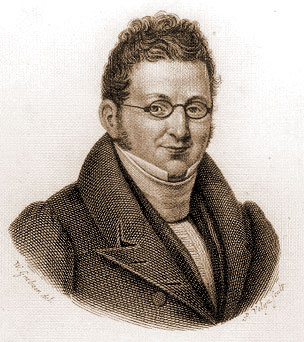
Christianus Petrus Eliza Robidé van der Aa was a Dutch jurist and author. He was the son of Pierre Jean Baptiste Charles van der Aa.

Henricus Aeneae was a Dutch scientist and mathematician.
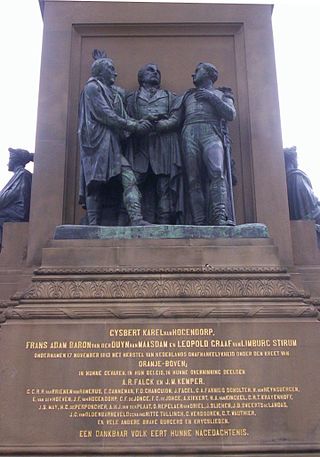
The Triumvirate of 1813, or the Provisional Government, governed the Netherlands briefly at the end of the Napoleonic era, before William I of the Netherlands came to the throne. It consisted of Gijsbert Karel van Hogendorp, Frans Adam van der Duyn van Maasdam and Leopold van Limburg Stirum.
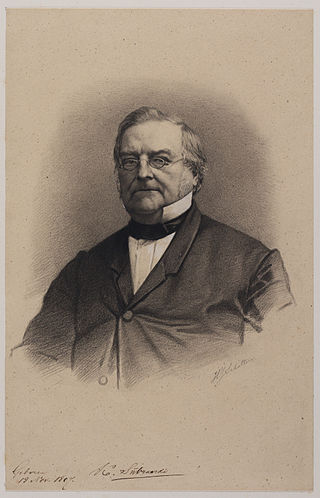
Klaas Sybrandi, also spelled as Sijbrandi, was a Dutch Mennonite minister, author and translator who was involved with several societies and foundations.
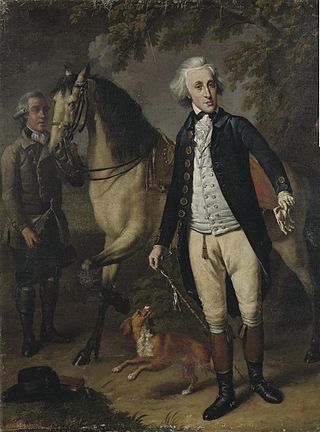
Jan van Walré, was a 19th-century bookseller, poet, and playwright from the Netherlands.

Adriaan Loosjes, was a 19th-century botanist, poet, novelist and publisher born in Den Hoorn, North Holland, Netherlands.
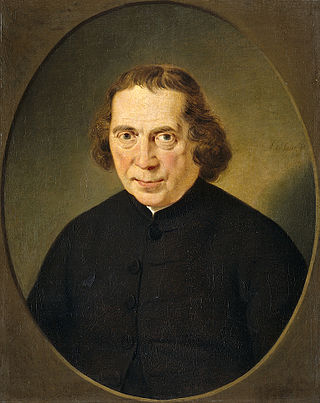
Jan Nieuwenhuijzen was a Dutch Mennonite teacher and minister.
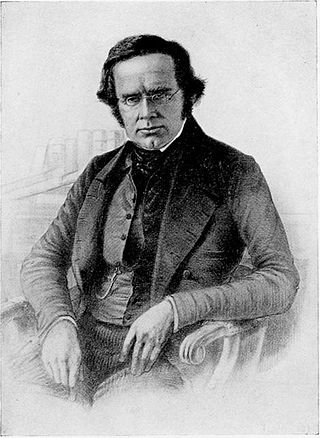
Ottho Gerhard Heldring was a Dutch preacher and philanthropist who believed in justification through faith but also in social work. He was one of the early leaders of the Dutch temperance movement. He is known for establishing homes and schools for prostitutes wishing to start a new life and for vulnerable girls and young women.

Pieter Johannes Veth was a Dutch professor of geography and ethnology and the first Chairman of the Royal Netherlands Geographical Society. He was also the father of Daniël David Veth, a Dutch explorer and photographer.
Anton Peter Barten was a Dutch economist.
The People's University of Amsterdam, also known as Volks Universiteit Amsterdam or Folk University, is a course centre for adults in Amsterdam. Volksuniversiteit Amsterdam was founded in 1913 and has multiple study centres in Amsterdam. Since 2016, the Volksuniversiteit Amsterdam has been working together with the Amsterdam Public Library.
Nieuwenhuizen is a Dutch surname meaning "new houses". A great number of variant forms exist. Notable people with such surname include:
Maria Vlier was a Dutch Surinamese teacher who wrote the first history textbook focused on the history of Suriname. Born into an intellectual family who descended from slaves, Vlier was educated in the Netherlands and returned to Suriname to teach. Recognizing that students were being taught European history and had no knowledge of the history of their own homeland, she wrote the first textbook on the colony. The book won a silver medal at the International Colonial and Export Exhibition of 1883 and was one of the three most-used textbooks in the Surinamese education system until 1945.

Louis Henri de Fontenay, also known as Ludovicus Henricus de Fontenaij, was a Dutch painter, draftsman, and lithographer.

















